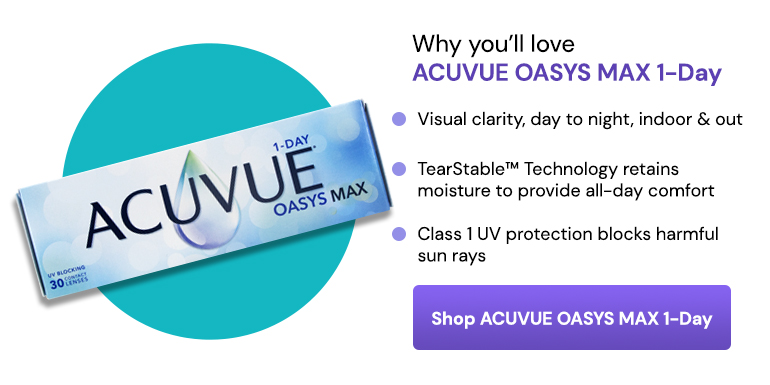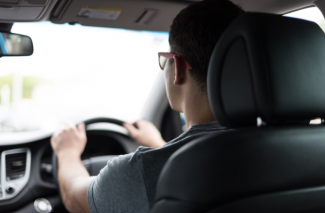The state of driver’s eyesight revealed
Drivers are stripped of their licence for several reasons, and one of them can be because their vision doesn’t meet the minimum requirements. In 2019, around 19 people per day lost their licence because of their eyesight.
The ability to see clearly is crucial for driving safely. Given that our eyesight can deteriorate as we age, it is often debated whether people should be allowed to drive as they reach certain milestones.
To mark Road Safety Week 2023 we issued a survey to analyse the current state of driver’s eyesight in Great Britain.
We surveyed 1,029 drivers who wear glasses and/or contact lenses to find out how often they wear their prescription for driving, when they last had a sight test, and their views around testing, driving and older generations on our roads.
65% of drivers don’t know the minimum eyesight requirement
The legal eyesight standard set out by the DVLA means that you must be able to read a number plate 20 metres away. Additionally, your eyesight must not be currently worse than 6/12 (decimal 0.5) on the Snellen scale.
| How many meters away should you be able to read a registration plate in order to drive safely? | Responses |
| 5 meters | 8% |
| 10 meters | 20% |
| 15 metres | 11% |
| 20 metres | 35% |
| 25 metres | 12% |
| 30 metres | 7% |
| 35+ metres | 7% |
When asked about the vision requirement, 65% of drivers gave the wrong answer, citing distance over or under the minimum standard, compared to just 35% of drivers who correctly answered.
Less than half of drivers wear their prescribed glasses 100% of the time compared to a third of contact lens wearers
Wearing prescribed glasses or contact lenses allows you to meet the 6/12 (decimal 0.5) standard. If you do drive on public roads without meeting this requirement, your licence may be revoked, and you could be prosecuted.
Less than half of drivers (48%) wear glasses prescribed for driving consistently. Over a quarter of respondents (26%) wear their glasses half of the time whilst driving their car, and one in 10 do not wear them at all behind the wheel.
| How often do you wear glasses whilst driving? | Responses |
| I wear glasses 100% of the time whilst driving | 48% |
| I wear glasses 75-99% of the time whilst driving | 15% |
| I wear glasses 50-74% of the time whilst driving | 12% |
| I wear glasses 25-49% of the time whilst driving | 7% |
| I wear glasses less than 25% of the time whilst driving | 7% |
| I don't wear my glasses whilst driving | 11% |
Interestingly, 53% of men wear their prescription glasses 100% of the time whilst driving, compared to 44% of women, nearly 10% less.
People aged 55 and over are more consistent in wearing their glasses all of the time whilst driving (61%) compared to those aged 17-24 who wear them half as much (30.5%).
| How often do you wear contact lenses whilst driving? | Responses |
| I wear contact lenses 100% of the time whilst driving | 30% |
| I wear contact lenses 75-99% of the time whilst driving | 27% |
| I wear contact lenses 50-74% of the time whilst driving | 22% |
| I wear contact lenses 25-49% of the time whilst driving | 7% |
| I wear contact lenses less than 25% of the time whilst driving | 7% |
| I don't wear my contact lenses whilst driving | 8% |
Contact lens users are less likely to wear their prescriptive eyewear behind the wheel. Just 30% of drivers wear them all of the time whilst driving, despite being prescribed them for driving, with a third wearing them 25-75% of the time behind the wheel.
27% of people believe drivers who are caught not wearing their prescribed glasses or contact lenses should face a fine, while 15% believe they should receive a driving ban.

One in five respondents had an eyesight test over two years ago, which is the standard requirement
It's recommended that everyone (driver or not) gets their eyes tested every two years to protect your eye health. Our eyes deteriorate over time, so drivers should be aware of changes to their vision and if they become concerned, and arrange an eye test with their local optician.
Our study found 22% of UK drivers had their sight tested more than two years ago, compared to 78% who visited their optician within the recommended time frame. On average, drivers had their vision tested 1.5 years ago.
| When was the last time you had an eyesight test? | Responses |
| I have never had my eyesight tested | 0.4% |
| Less than six months ago | 24% |
| Six months, up to a year ago | 28% |
| More than a year, up to 2 years ago | 26% |
| More than 2 years, up to 3 years ago | 11% |
| More than 3 years, up to 4 years ago | 6% |
| More than 4 years, up to 5 years ago | 3% |
Two in three people believe drivers over the age of 60 should NOT be allowed behind the wheel
Drivers over a certain age can experience more difficulty on the road when it comes to their vision and their ability to react fast. However, it’s worth noting that many are perfectly able drivers going into their nineties, including the Queen.
According to the Department for Transport, 77% of those over 70 years of age hold a car driving licence. This is 10% higher for those aged 60-69.
Interestingly, the majority (67%) of people surveyed believe drivers over the age of 60 should not be allowed to drive on public roads.
One in five people also believe drivers should have to retake their driving test every five years to ensure they are fit to drive.
The Association of Optometrists has previously called for all drivers to have a compulsory vision check when they first apply for a licence, and then when renewing their licence every 10 years (and every 3 years for over 70s). 68% of respondents believe drivers over the age of 40 should have eye tests once a year to ensure they are fit to drive.
Driving at night affects our ability to see when behind the wheel the most
Several conditions when driving can make our ability to see and drive safely more challenging.
Our eyes can be sensitive to light, magnified by rain or darkness. More than half of drivers (55%) experience some form of difficulty in seeing when driving in the rain because of their eyesight, and 60% experience difficulty when driving at night.
| Condition | % of people experiencing some form of difficulty in seeing |
| Night | 60% |
| Rain | 55% |
| Tiredness | 52% |
| Rush Hour | 37% |
Driving when tired can make it difficult to focus your eyes, and rush hour requires high attention. Results show 52% of drivers experience some form of difficulty in seeing when tired because of their vision, and 37% experience difficulty when driving during rush hour.
The effects of driving with poor vision on British roads
South-East England sees the most accidents year-on-year caused by uncorrected, defective eyesight
| Rank | Region | 2018 Accidents | 2019 Accidents | 2020 Accidents |
| 1 | South East | 43 | 34 | 44 |
| 2 | South West | 33 | 26 | 26 |
| 3 | Eastern | 20 | 25 | 23 |
| 4 | North West | 27 | 11 | 15 |
| 5 | London | 18 | 11 | 14 |
| 6 | Wales | 6 | 10 | 13 |
| 7 | West Midlands | 9 | 10 | 11 |
| 8 | Yorkshire/Humberside | 14 | 9 | 6 |
| 9 | Scotland | 7 | 8 | 6 |
| 10 | East Midlands | 13 | 11 | 4 |
| 11 | North East | 6 | 4 | 3 |
The danger of poor vision and driving is that you’re four times more likely to cause a road accident when not wearing prescribed visual aids.
According to the Driver and Vehicle Licensing Agency (DVLA), in 2020 there were over 165 road collisions in Great Britain resulting from uncorrected or defective eyesight.
Roshni Patel MCOptom, expert optometrist, comments:
“With several accidents still taking place on the roads as a result of poor vision, it is crucial for drivers to be receiving regular eye examinations. Motorists should take an eye test at least once every two years to ensure they are fit for the roads and not causing any dangers to themselves or others. If you experience a deterioration in your eyesight or a change in your vision it is important to arrange an eye test as soon as possible. Poor eyesight can lead to a slower reaction to things happening on the road which can therefore increase the chances of an accident taking place.
As well as getting your eyes tested regularly, drivers should also be extra vigilant when driving during particular times of the year and in certain conditions. For example in the winter months, the sun tends to rise and fall during peak commuter times, which as a result can impact the driver’s vision and prevent them from seeing. Drivers can take easy precautions such as always having sunglasses stored in their car, using their visor and ensuring their windscreen is clean. Allowing that extra distance between the cars around you and slowing down is another way to help reduce an accident in difficult visual conditions.”



